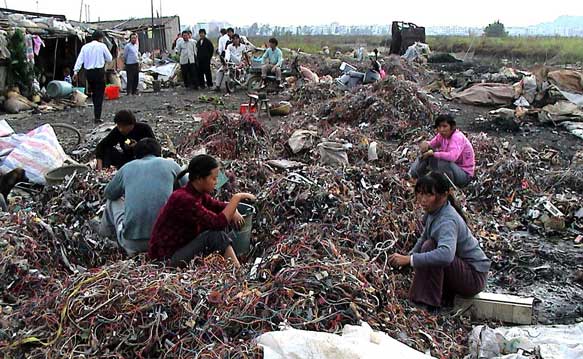Construction workers involved in environmentally friendly, ‘green’ building projects can face additional traditional and novel hazards, researchers have found. Problems identified in the study identify a greater risk of falls and new, high risk tasks.
The University of Colorado study, publishing in the Journal of Construction Engineering and Management, examined construction projects built to achieve the US Green Building Council’s Leadership in Energy and Environmental Design (LEED) certification. The research team found compared to traditional builds, certain tasks in sustainable building projects put workers at an increased risks of lacerations, strains and sprains (up 36 per cent from handling recycled materials), eye strain (up 19 per cent from installing reflective membranes) and exposure to hazardous chemicals (up 14 per cent from installing wastewater technologies). The study also found a 24 per cent increase in falls during roof work, attributed to the installation of on‐site renewable energy systems like photovoltaic cells.
“It doesn’t have to be this way,” noted Peter Stafford, executive director of CPWR – the Center for Construction Research and Training, which supported the study. “With proper layout of the worksite, recyclables can be sorted safely and efficiently. With properly scheduled breaks for hydration, a reflective roof doesn’t have to mean trips to the hospital. And with proper fall protection solar panels can reduce our dependence on fossil fuels without risking workers’ lives and limbs.”
Contractors and designers interviewed for the study said measures to reduce injuries and better protect workers could include incorporating prefabrication, more effective site layout and use of alternative products. Using low-emission materials also could reduce occupational health risks for workers in enclosed environments.
- Katherine S Dewlaney, Matthew R Hallowell, and Bernard R Fortunato, Safety risk quantification for high performance sustainable building construction, Journal of Construction Engineering and Management, published online ahead of print, 2011 [abstract].


Green energy can still make safe choices
While green energy has its safety problems, it’s worth remembering traditional energy production has always been a major consumer of human lives – even in countries boasting a good safety record.
In the UK, the official workplace regulator, the Health and Safety Executive (HSE), has been instructed to explain its mines safety strategy, after a series of fatalities this year and revelations Britain’s coal mine fatality rate has hit a 50-year high. Union representatives raised concerns about the industry’s record at HSE’s December board meeting, which agreed the watchdog should prepare a paper for the board on its strategy to address safety in the mines.
The deteriorating coal mine safety record came to light after Hazards magazine obtained official figures showing in the five years to 2010/11 the fatality rate in the UK coal mining industry has been running at 42.9 deaths per 100,000 workers – over 60 times the all-industries rate of 0.7/100,000 for the same period. The figures showed the UK coal industry has not had a single fatality-free year in the last six. The six years before that saw one fatality in total. This year’s flurry of deaths will push the average rate in the six years from 2006 to in excess of 47 deaths per 100,000 workers – a 50-year high.
In a statement to Hazards, HSE confirmed: “The last time the equivalent rate of fatalities in coal mining was in the range of 40 per 100,000 was in the early sixties when we estimate it was 46.” When pressed by Hazards, HSE admitted: “A deterioration in the long-term improvement began to emerge in the last five years and, given the reduced size of the industry, was both pronounced and of concern to HSE.” The mine safety watchdog added: “We are focused on ensuring through our interventions that improvements in the industry are keeping pace with the changing activity levels in mining.”
Mines safety expert Dave Feickert says with the UK industry typically paying less regard for safety, the mining unions no longer present in all the mines and with curtailed safety rights where they are present, and HSE doing less with less. “Sadly, large British mines… in recent years have been less safe than some comparable large mines in China. There are relatively new mines in China which have not had a single fatality… the simple fact is China is getting better while the UK is getting worse.”
China’s official death toll for 2010 was 2,433, but that is in an industry employing over 4 million miners. It amounts to an official death rate for China’s coal mines not too far distant from that in the UK. The China figures may be suspect, but they are at least heading in the right direction, down from almost 7,000 deaths a year in 2002. Mine disasters in New Zealand and the US in recent months show the mine safety problem is not restricted to developing economies.
As a relatively new industry, ‘green energy’ can still choose to integrate safety at the development, operation and decommissioning stages. Some early studies suggests it is not taking this role as seriously as it might, with evidence of old hazards persisting and new one emerging.
But there is hope. The US Green Building Council’s Leadership in Energy and Environmental Design (LEED) certification system – the most influential of its kind worldwide – is looking at introducing credits recognising a good occupational health and safety performance as part of its overall green buildings rating. It’s overdue. Last month, the green watchdog got round to introducing credits on bird-friendly design. Workers may be lower down USGBC’s pecking order, but may at least now have made it on to its ‘to do’ list.
This month, the US Green Buildings Council added Howard Frumin of the University of Washington’s School of Public Health to its board, to advise on public health issues.